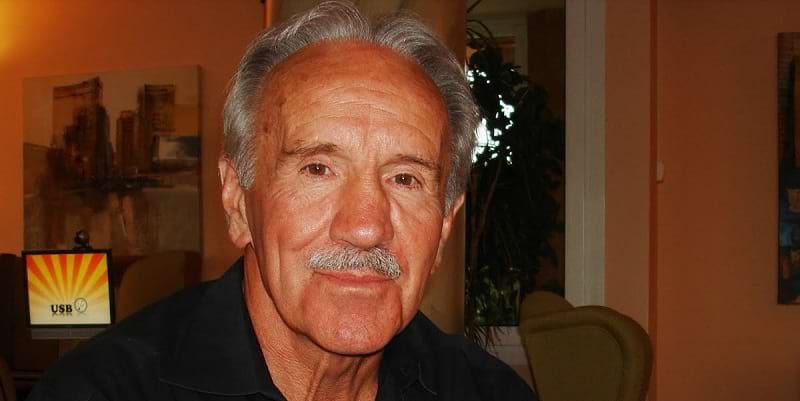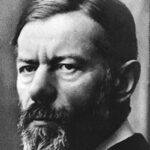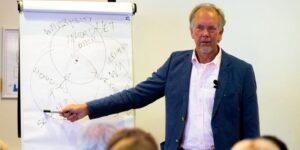John Grinder biography and books

John Grinder (Dr. John Thomas Grinder Jr., born January 10, 1940) is an American linguist, management consultant, trainer, author, and speaker. John Grinder is credited with developing neuro-linguistic programming (NLP) along with Richard Bandler. He is also co-director of Quantum Leap Inc., a management consulting firm founded by Carmen Bostic St. Clair. Together they give workshops and seminars about NLP worldwide.
John Grinder biography
Dr. John Grinder was born on January 10, 1940 in the United States. Not much is known about his childhood. He graduated with a bachelor’s degree in psychology from University of San Francisco. In the 1960s he served in the army for some time, after which he took a job with a United States intelligence agency. After this period he resumed his training in psychology at the University of California and received his doctorate (PhD) in linguistics in 1971.
In the period following his graduation, John Grinder worked as a lecturer at the University of California, Santa Cruz (UCSC). Here he focused on exploring Noam Chomsky’s theories of transformational grammar specializing in syntax and deletion. He collaborated with Paul Postal and Edward Klima, among others. Together they focused on integrating semantic elements and syntactic construction.
John Grinder met Richard Bandler at UCSC, as he was a psychology student there at the time. Richard Bandler approached Grinder for help with specific aspects of modeling gestalt therapy. Together they then worked on studies previously conducted by Fritz Perls, Milton Erickson and Virginia Satir. They were able to expand on these theories and published their own findings in The Structure of Magic. Several versions of this were eventually published. Together they continued to research and publish, and eventually created neuro-linguistic programming. Before that, the publication Frogs into Princes was also released.
In the end, disagreements between John Grinder and Richard Bandler got the better of them and they parted ways as colleagues. Richard Bandler even sued John Grinder for the right to NLP and its practice and teaching. Both continued to train professionals, but no longer together. The two have not worked together since the 1980s. John Grinder himself founded the International Trainers Academy for Neuro-Linguistic Programming with his wife, Michael Carroll and Carmen Bostic St. Clair.
Influence of NLP on psychology
NLP states that there is a connection between psychological processes and working on this connection can help reduce psychological complaints. NLP professionals therefore try to model and teach useful life skills that are claimed to reverse common conditions such as depression and anxiety.
Specific methods within NLP are only accessible to those trained and the specific methodology changes periodically. John Grinder refers to his originally published model as the classic code. He and his wife then expanded the code and eventually even developed a new code.
Both versions of it are based on the principles of hypnosis and persuasion. They are often practiced in groups. The basis of NLP is that a professional collects information and builds a relationship with the client. They then work together on the client’s specific goals. The therapist pays close attention to the non-verbal signals that the client shows and tries to steer the behavior. The client is encouraged to mentally rehearse changes by, for example, mimicking a conversation in the mind as he or she would like it to happen in real life.
There are several empirical studies that have failed to validate NLP. Some researchers even claim that NLP is pseudoscience in its entirety. Nevertheless, many clients have benefited from the method.
Famous Quotes
- “Creative geniuses are: 1. Comfortable with uncertainty, 2. Able to hold seeming opposites or paradoxes, 3. Persistent.”
- “Remember: the journey is the destination.”
- “One of the strategies that they taught us was how to generate an even greater amount of learning and choice from every experience or life situation. We were instructed to review the events of the day and identify the significant choice points. We were to reflect on the choices we had made at those points and whether they were successful or unsuccessful in reaching our desired outcome. For each choice point, we were to imagine three alternative ways we could have responded, other than the way that we did (whether or not what we did was successful). In our imagination, we were to then project the results and consequences of each alternative and imagine what it would be like to have actually made this choice by stepping into the experience and fully living it somatically in imagination.”
- “The first application was named Mind Master, which was followed by the NeuroLink and a commercial computer game called MindDrive. Today, these applications are available through Somatic Vision.”
- “Remain, however, a firm believer in the value of the fundamentals. It is difficult to master the really slick stuff without core tools like the Meta Model, accessing cues, calibrations, anchoring, sub-modalities, and an understanding of how and why these are important.”
- “Wisdom comes from experience, but experience is not enough. Experience anticipated and experience revisited is the true source of wisdom.”
Books and Publications by John Grinder et al.
- 2019. On deletion phenomena in English (Vol. 221). Walter de Gruyter GmbH & Co KG.
- 2013. The origins of neuro linguistic programming. Crown House Publishing.
- 1982. Neuro-linguistic programming™ and the transformation of meaning. Utah: Real People.
- 1981. Trance-formations. Moab, UT: Real People Press.
- 1979. Frogs into princes: Neuro linguistic programming. Canadian National Institute for the Blind,[198-].
- 1977. Patterns of the hypnotic techniques of Milton H. Erickson, MD. Vol. II. Cupertino, CA: Meta Publications.
- 1976. The structure of magic (Vol. 2). Science and Behavior Books Inc.
- 1975. The structure of magic (Vol. 1). Science and Behavior Books Inc.
- 1972. On the cycle in syntax. In Syntax and Semantics Volume 1 (pp. 81-111). Brill.
- 1971. Missing antecedents. Linguistic inquiry, 269-312.
- 1971. Chains of coreference. Linguistic inquiry, 183-202.
- 1971. A global constraint on deletion. Linguistic Inquiry, 2(1), 110-112.
How to cite this article:
Janse, B. (2023). John Grinder. Retrieved [insert date] from Toolshero: https://www.toolshero.com/toolsheroes/john-grinder/
Original publication date: 02/20/2023 | Last update: 05/20/2023
Add a link to this page on your website:
<a href=”https://www.toolshero.com/toolsheroes/john-grinder/”>Toolshero: John Grinder</a>











